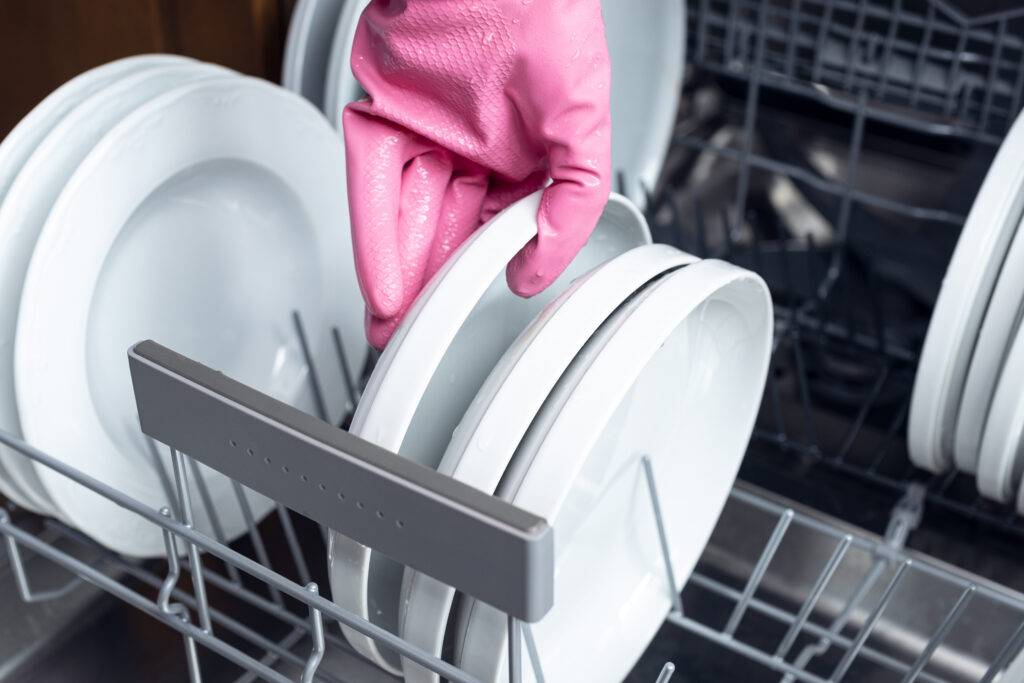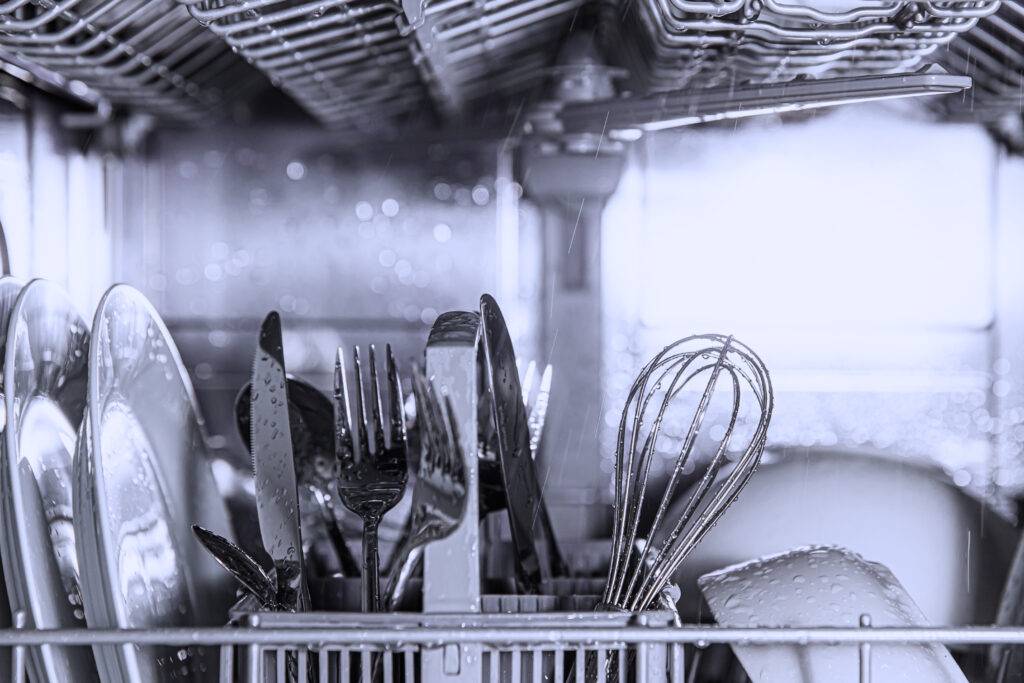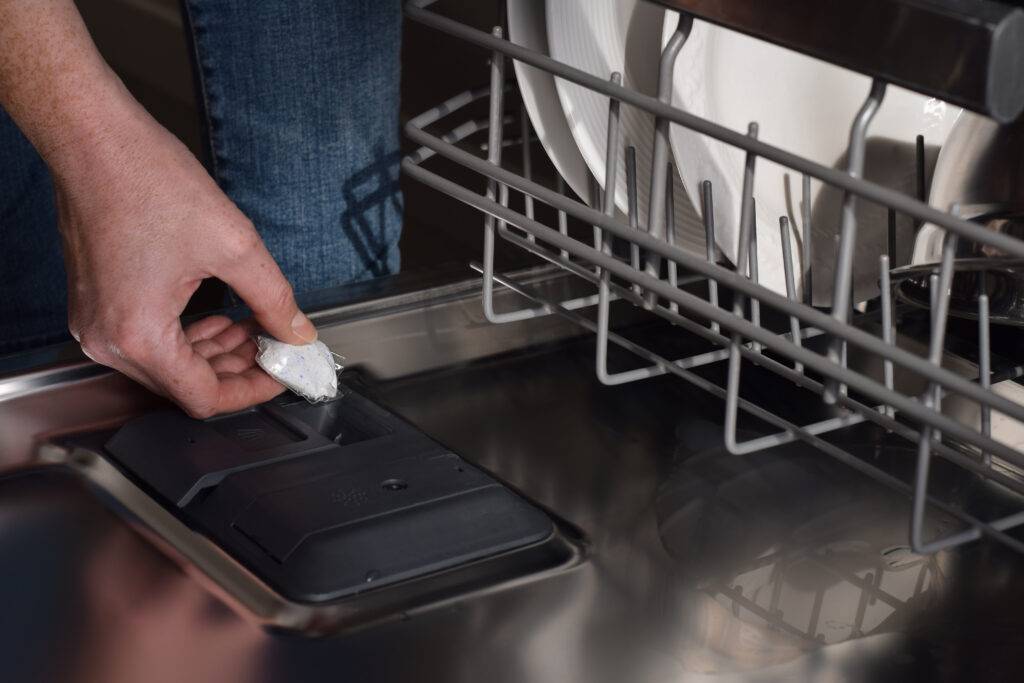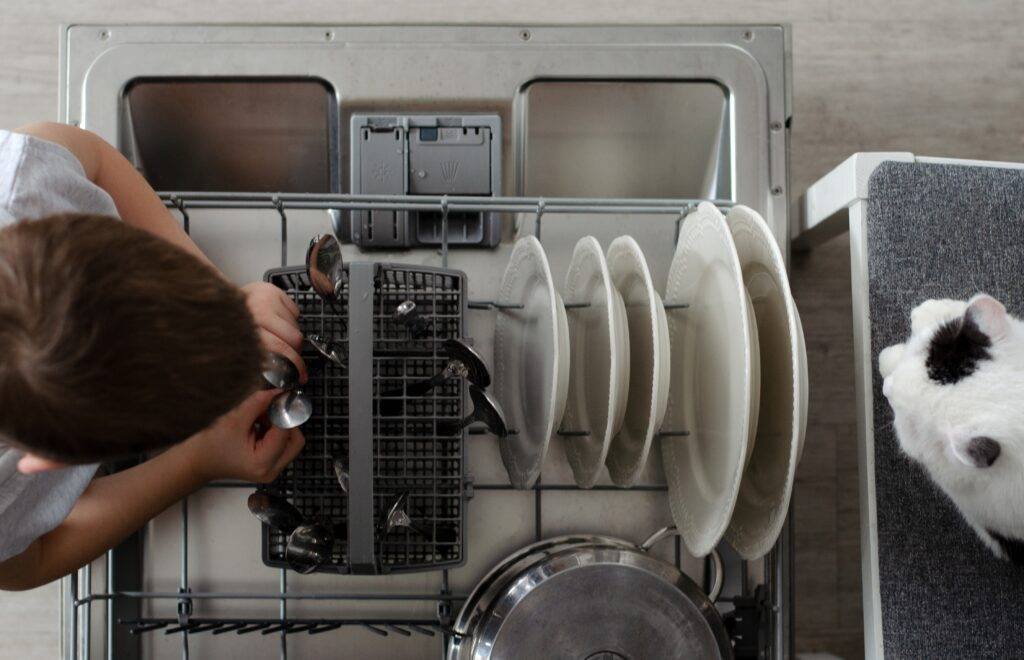Dishwashers are one of those modern conveniences that we often take for granted—until they start showing signs of neglect. If you’ve ever noticed a funky smell coming from your dishwasher or found that your dishes aren’t as clean as they used to be, it’s time to roll up your sleeves and give them a thorough cleaning.
How to Clean a Dishwasher?

In this article, I’ll share my journey to a cleaner dishwasher and provide you with the step-by-step process I used to bring my dishwasher back to life.
Why is it Important?
Your dishwasher works hard to keep your dishes clean, but it also accumulates food particles, grease, and mineral deposits over time. If left unchecked, these residues can cause clogs, unpleasant odors, and even reduce the efficiency of your appliance. I learned this the hard way when my dishwasher began to emit a musty smell and my glasses came out with a cloudy film. As a certified public health expert, I knew that a dirty dishwasher could also harbor harmful bacteria, so I set out to clean it thoroughly.
Understanding the Cause

Before diving into the cleaning process, I needed to understand what was causing the problem. I started by removing the dishwasher racks and inspecting the interior. It didn’t take long to find the culprits: bits of food stuck in the filter and a buildup of grease and limescale along the walls and spray arms. I also noticed that the rubber gasket around the door had a layer of grime that needed attention. This inspection gave me a clear idea of what needed to be cleaned and how to approach it.
Cleaning Process
With the problem areas identified, I followed these steps to clean my dishwasher:
1. Clean the Filter The dishwasher filter is designed to catch food particles and prevent them from clogging the drain. However, if the filter becomes clogged, it can reduce the dishwasher’s efficiency and cause odors. I removed the filter (usually located at the bottom of the dishwasher), rinsed it under running water, and gently scrubbed it with a soft brush to remove any trapped debris. After cleaning, I reinstalled the filter, making sure it was securely in place.
2. Clean the Spray Arms The spray arms are responsible for distributing water throughout the dishwasher. If they become clogged with mineral deposits or food particles, the water won’t flow properly, leading to poorly cleaned dishes. I removed the spray arms and used a toothpick to clear out any clogged holes. Afterward, I rinsed the spray arms under running water and reattached them to the dishwasher. This step can be a bit tricky, as spray arms are delicate, so be careful not to break or damage them during the cleaning process.
3. Wipe Down the Interior Next, I cleaned the interior walls of the dishwasher. Using a mixture of warm water and dish soap, I wiped down the sides, bottom, and back of the dishwasher, removing any grease and grime. I paid special attention to the corners and edges, where dirt tends to accumulate. This process required some elbow grease, especially for areas with stubborn buildup. To remove tougher stains, I used a non-abrasive sponge and gently scrubbed until the surfaces were clean.
4. Clean the Door Gasket The rubber gasket around the dishwasher door can collect dirt and mildew over time. I used a cloth soaked in a solution of equal parts vinegar and water to wipe down the gasket, making sure to get into the crevices. This step is crucial, as a dirty gasket can lead to leaks and mold growth. I also checked for any signs of wear and tear on the gasket, ensuring it was still intact and providing a proper seal.
5. Run a Cleaning Cycle After cleaning the visible parts of the dishwasher, I ran a cleaning cycle to tackle any remaining residues and odors. I placed a cup of white vinegar on the top rack and ran a hot water cycle. The vinegar helps break down mineral deposits and eliminates odors. After the vinegar cycle, I sprinkled baking soda on the bottom of the dishwasher and ran a short cycle to freshen the appliance further. This two-step cleaning cycle is highly effective in removing lingering odors and ensuring a fresh-smelling dishwasher. You can also read about getting rid of mold here.
Implementing Preventive Measures

With the cleaning process complete, I wanted to make sure my dishwasher stayed clean and efficient. To do this, I implemented a few preventive measures:
1. Regular Filter Maintenance I made it a habit to check and clean the dishwasher filter regularly. This helps prevent clogs and ensures that the dishwasher can drain properly. I also inspected the filter for any signs of damage, replacing it if needed.
2. Proper Loading Techniques Proper loading of the dishwasher is essential for efficient cleaning and preventing buildup. I started scraping off excess food from dishes before loading them into the dishwasher. This simple step reduces the amount of debris that ends up in the filter and spray arms. Additionally, I made sure to load the dishwasher in a way that allowed water to circulate freely, avoiding overloading and ensuring proper cleaning.
3. Regular Cleaning Cycles To maintain a clean dishwasher, I began running a cleaning cycle with vinegar and baking soda once a month. This routine helps prevent the buildup of mineral deposits and keeps the dishwasher smelling fresh. I also encouraged my family to avoid placing items in the dishwasher that could damage it, such as certain plastics or non-dishwasher-safe items.
The Final Result

After following these steps, my dishwasher was like new. The smell was gone, the dishes came out sparkling clean, and I felt confident that I had eliminated any harmful bacteria. The whole process took a couple of hours, but it was well worth it to restore my dishwasher’s performance and extend its lifespan.
Conclusion
Cleaning your dishwasher is an essential maintenance task that should not be overlooked. By regularly cleaning the filter, spray arms, interior, and door gasket, and running a cleaning cycle, you can keep your dishwasher running smoothly and prevent issues like odors, clogs, and poorly cleaned dishes. If you’ve noticed any signs of a dirty dishwasher, don’t hesitate to give it a thorough cleaning. Your dishwasher will thank you, and so will your dishes.
Now if you have mastered the art of cleaning the dishwasher, then you move on to learning the ways to Clean a Mattress for a better night’s sleep.
How often should I clean my dishwasher?
It’s a good idea to clean your dishwasher at least once a month to prevent the buildup of food particles, grease, and mineral deposits. However, if you use your dishwasher frequently or notice any signs of odors or decreased performance, you may need to clean it more often. Regular cleaning helps ensure your dishwasher operates efficiently and prevents issues down the line.
Can I use bleach to clean my dishwasher?
While bleach can be effective at killing bacteria and mold, it’s generally not recommended for cleaning dishwashers. Bleach can damage the rubber parts of the appliance and may react with other cleaning agents. Instead, use white vinegar and baking soda for a safer, natural approach to cleaning your dishwasher. These substances are effective at breaking down grime and eliminating odors without causing damage.
What can I do to prevent my dishwasher from getting dirty?
To keep your dishwasher clean and in good working condition, try these preventive measures:
Scrape excess food off your dishes before loading them into the dishwasher. Rinse the filter regularly to prevent clogs. Ensure the dishwasher is properly loaded, allowing for good water circulation. Use a high-quality dishwasher detergent to prevent buildup and residue. Run a cleaning cycle with vinegar and baking soda once a month to maintain freshness and cleanliness.

